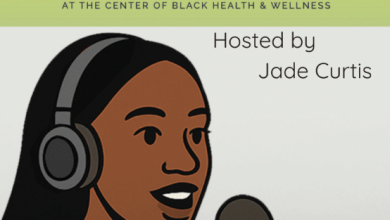6 Easy Ways to Manage Tardive Dyskinesia in Public


If you or someone you know has Tardive Dyskinesia (TD), you already know. All those tics and twitches, jerking and jostling, can be straight-up embarrassing when in public. Fortunately, while these involuntary movements may make normal social functioning difficult, they don’t have to.
If you’re experiencing TD, despite stopping or changing your medication, there’s help.
Here are six easy strategies for managing your TD in social settings.
1. Progressive Muscle Relaxation
Never heard of it? Progressive muscle relaxation (PMR) is a technique that trains your body to relax. You start by tensing various muscles and then gradually relaxing them. You can do this by tensing different groups all at once, or going group by group. Over time, this can reduce the likelihood of involuntary movements from TD.
To master PMR, first find a comfy quiet place. Sit or lie, and start with your feet. Gradually work up your body as you tense and release each muscle group for roughly five seconds of tension, and 20 seconds for relaxation.
As you go, focus on how it feels, and be sure to inhale and exhale calmly. With regular practice, PMR can minimize your stress and lessen TD symptoms.
2. Comfortable Clothing
Loose-fitting clothing can go a long way for people with TD. Meanwhile, tight clothing can make sufferers anxious and uncomfortable, worsening involuntary movements. If you’re changing up your wardrobe, go for cotton or linen. Look for items with elastic and avoid belts or accessories that are constricting.
While fashion is cool, comfort is king. With comfy clothing, you’ll feel freer, and less irritated, and your muscles and joints will thank you! So too, of course, will those symptoms of TD…
RELATED: 5 Medications That Can Trigger TD
3. Positioning
Sometimes, the best way to manage TD symptoms is to make them disappear. Now, while you can’t make them disappear entirely, you can do your best to hide them. This is where strategic positions come into play. For instance, when sitting, take a seat with armrests so you support and stabilize your arms and hands.
If you feel your symptoms coming on strong, move to a corner near a wall. This way you can reduce any attention drawn. You can also use objects like tables and desks to obscure views of certain bodily movements.
4. Distraction Tactics
“Hey, look over there!”
Distraction tactics are all about distracting yourself from what’s going on with your body. They can also be used to even change your brain chemistry, reducing the likelihood of symptoms. If you’re wondering how to do this, consider things like stress balls or spinners. These provide a distraction for fidgety hands and fingers.
Or how about convos? You can always distract yourself with a nice song, a good book, a stimulating convo, or an engrossing movie. Likewise, you can practice meditation and mindfulness to calm yourself and minimize anxious energy in your body.
5. Breaktime
It sounds simple, but taking regular breaks is a great way to address TD symptoms. It’s all about rest and reset. If you’ve been out and about among others, rest and recovery are especially important. Need a quiet, private place? Go outside for some clean air. Go to a restroom to isolate for a bit.
Once you’re by yourself, focus on breathing. Stretch your muscles and let them go loose. These temporary ‘escapes’ can help you gain back control and reduce any fatigue associated with stressful events.
You deserve it!
RELATED: 5 Ways Practicing Tai Chi Can Help Manage Tardive Dyskinesia
6. Mind Your Alcohol and Caffeine
Alcohol and caffeine are not friendly to people with TD. In fact, due to the effects on your nervous system, these substances can worsen your symptoms. If you’re struggling to eliminate them, just try to use them strategically.
When possible, go decaf. Drink non-alcoholic beer when in public, or enjoy a nice hot decaf tea. If you do imbibe, limit yourself. Eat food with it. Keep an eye on changes in how you feel and behave. Also, be mindful of surprise caffeine sources. Some foods like chocolate, ice cream, and protein bars contain caffeine. Some pain relievers even have caffeine.
So check your labels!
And if you’re struggling still, consult your doctor about other lifestyle measures that affect your symptoms. One of the best things you can do is eat healthier and exercise. Exercise will improve your mood and help relax you. Meanwhile, eliminating processed foods and sugary beverages can make an insane difference.
Finally, don’t forget about sleep. By improving your diet, exercise routine, and sleep schedule, you can make a major difference in your TD symptoms. Need further help? Reach out for support resources and learn tricks and tips you never thought of. No matter how you feel, know that you’re never alone.




